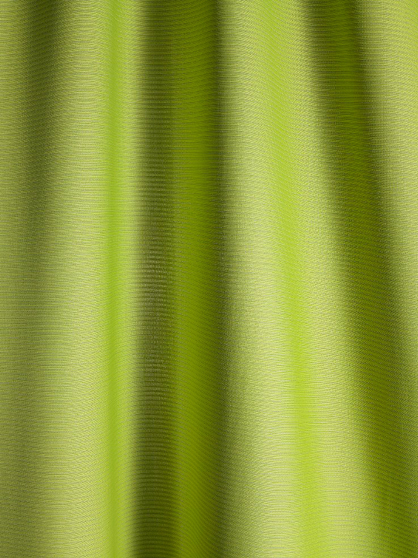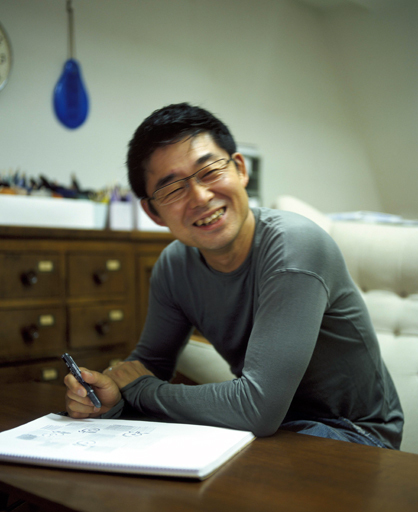sweet hope
Texte par NoéMie Schwaller
Zürich, Suisse
18.03.09
Sweet Hope is a curtain fabric, designed by the acclaimed Japanese designer Akira Minagawa. Ideal for offices, it offers superb heat and light regulation properties.
Sweet Hope is a curtain fabric, designed by the acclaimed Japanese designer Akira Minagawa. Ideal for offices, it offers superb heat and light regulation properties. This textile, easy to maintain, is made from reflective Trevira CS yarns and is, unusually, fabricated by knitting two layers together, which fixes the fabric against stretching. Previously, different layers have traditionally been woven together. The front side of the fabric is matt and colourful; the back is reflective and behaves like a metal in reflecting light and heat. Unlike many textiles with technical properties, there is no metal used in the construction of Sweet Hope. It is a natural choice for those looking to minimise their environmental impact.
Sweet Hope is excellent for regulating the environment.
The innovation in Sweet Hope lies in the novel reflection of light and the good transmission values. No metallic process is involved in the production, meaning there is no aluminium vaporised onto the textile. The fabric remains soft, semi-transparent and falls nicely.
Inspired by feelings and natural images, such as soft sunlight falling through the foliage, Akira Minagawa has developed nine gentle, earthy and different colours for Sweet Hope: autumnal browns, a cool blue, a mustard green, a dusty olive, soft greys and white. The inviting and accessible character of the textile has it roots in the designer’s vision. With Sweet Hope he aims to create lasting feelings of warmth, hope, happiness and togetherness with friends and family.
The Japanese textile and clothes designer is mainly known for his minä perhonen fashion label, which is characterized by a romantic, slightly naive style. His designs are detail-oriented and conscientiously worked out and his garments are in great demand among fashion-conscious, young Japanese women. The variations of his textiles are virtually endless, or as he puts it: «as many as there are varieties of butterfly». Minagawa is able to combine his fascination of the Northern countries with his own cultural roots and hence create the absolutely unique, personal style that has made his designs so popular in the recent decade. This is very much in evidence in Minagawa’s fashion collections, where Japanese influences blend very beautifully and innovatively with those of Scandinavia.In 2006 Minagawa was awarded Designer of the year by the Japanese newspaper Mainichi Shimbun.
«I try to design clothes so that they last for a long time and improve with everyday use. I do not want to be just a fad or give a strong impact that does not last. I think of upholstery in the same way.» - Akira Minagawa
About the fabric:
100% Trevira CS
9 colours
175 cm wide
Design: Akira Minagawa
Light transmission: visible light transmitted through the product.
Light reflection: visible light reflected and excluded.
Solar transmission: the sun’s invisible rays (heat) transmitted through the product, increasing room temperature.
Solar reflection: the sun’s invisible rays (heat) are reflected and do not contribute to increasing room temperature.
Solar absorption: the sun’s invisible rays (heat) absorbed by the product. The darker the colour, the greater the absorption.
G - factor: an overall factor that takes into account the above measurements.



